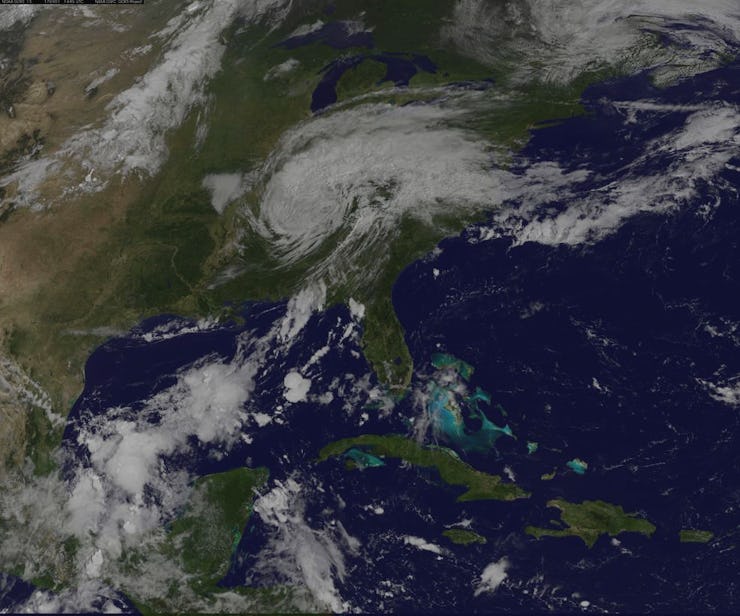Google's AI could change weather forecasting forever
Everyone complains about the weather. Now Google is doing something about it.

The technology we use for weather forecasts has greatly improved over the past decade. As we’ve reported before, we’re even using supercomputers to make forecasts significantly more accurate. With some help from machine learning, Google thinks it can help make weather forecasting faster than ever.
In a new blog post, Google claims machine learning can be used to produce “highly localized” weather forecasts that are “nearly instantaneous.” The company explains that localized storms are difficult to predict, and machine learning could help solve that problem.
Google researchers were able to develop a system that could predict weather patterns up to six hours into the future within 5 to 10 minutes. The tech giant says current weather forecasting tools can take “multiple hours to run.”
“In the US, remote sensing data collected by the National Oceanic and Atmospheric Administration (NOAA) is now reaching 100 terabytes per day. NOAA uses this data to feed the massive weather forecasting engines that run on supercomputers to provide 1- to 10-day global forecasts,” the company writes. “Computational demands limit the spatial resolution to about 5 kilometers [approximately 3.1 miles], which is not sufficient for resolving weather patterns within urban areas and agricultural land.”
Google’s system, on the other hand, can predict weather events at a spatial resolution of 1km (0.62 miles). That means it’s able to analyze data more quickly and predict how the weather will change in specific areas more accurately.
Something that’s interesting about Google’s system is it doesn’t incorporate physics. It was trained on radar data from between 2017 and 2019 that was collected by the National Oceanic and Atmospheric Administration (NOAA), and it applies what it learned from that data and what it continues to learn as it’s used to make predictions.
“We use a data-driven physics-free approach, meaning that the neural network will learn to approximate the atmospheric physics from the training examples alone, not by incorporating a priori knowledge of how the atmosphere actually works,” the company writes.
The researchers compared their system to multiple existing weather forecast systems to see how it compared. They put it up against a High Resolution Rapid Refresh (HRRR) numerical forecast, an optical flow algorithm and a persistence model. The results varied, but Google’s system was overall better than all three of those forecasting methods.
It’s not surprising that we would start applying machine learning, artificial intelligence and neural networks to something as complicated as forecasting the weather. They don’t get a lot of credit for it, but government organizations like the NOAA have been rapidly adopting new technologies and improving weather forecasts for some time now.
See also: Why “Storm Clusters” Are a Growing Weather Problem
IBM announced last year that it was also getting into the game of using A.I. to help predict the weather. It’s working with its subsidiary The Weather Company to “predict how fluctuations in weather can impact business performance, even months in advance.”
Google isn’t ready to launch a new weather forecasting tool or take its new machine learning system to the folks who analyze weather data at the NOAA or another private company, but this research could be a peek at what’s next in the world of figuring out when a storm is on its way.